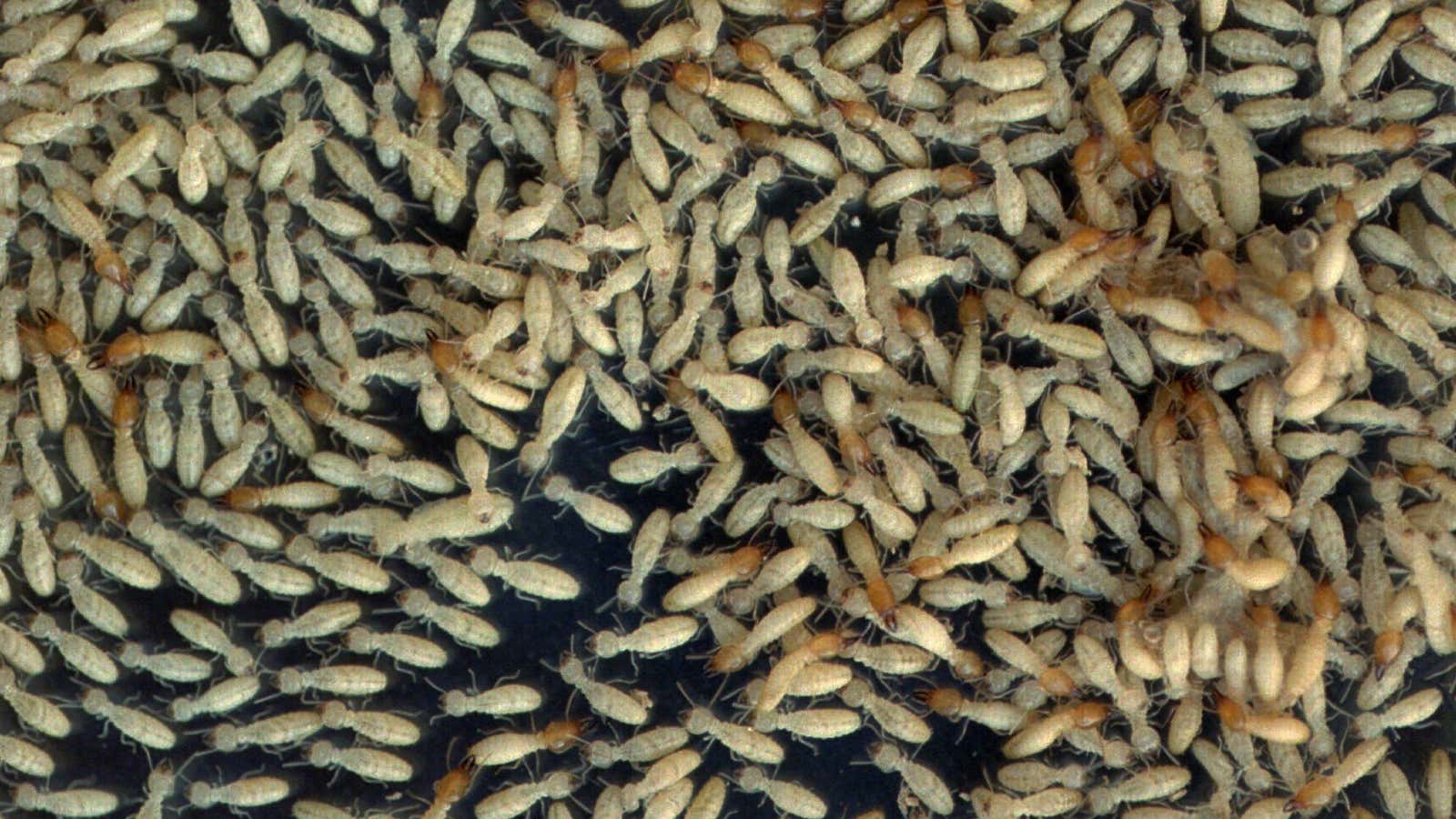Researchers have recently uncovered evidence of a 4,000-year-old construction site in northeastern Brazil. Stretching over an area the size of Britain is a cluster of 200 million mounds, some as high as 10 feet tall, that were painstakingly raised over the centuries by generations of extremely ambitious builders—termites.
The mounds are the work of a single species: Syntermes dirus, one of the largest termites in the world. The cone-shaped piles, each spaced about 60 feet apart, are what’s left behind when the insects burrow tunnels in the soil beneath the dry tropical forest. Some of the mounds are still in use. Radioactive dating found that the oldest piles were 3,820 years old, according to a new paper in Current Biology.
That’s about as old as the Great Pyramids at Giza, though the pyramids weren’t quite as ambitious: The mounds represent 2.4 cubic miles of unearthed dirt, a volume that would fill roughly 4,000 Great Pyramids. Like the Egyptian landmarks, they can also be seen from space.
The mounds are the result of a highly efficient food-distribution system. The termites feed on the dead leaves of the dry, thorny caatinga forests unique to the region. The leaves fall once a year, prompting a termite feeding frenzy. The tunnels allow the insects to cover a greater expanse of forest floor.
“Just think if all the supermarkets were open for only one day in the year, those people that can move rapidly along vast distances will get most food and a better chance to survive,” entomologist and lead author Stephen Martin told Gizmodo.
It’s a fascinating find, though the reasons for its discovery are distressing. This UK-sized area used to be covered by trees, which were recently cleared for pasture.
